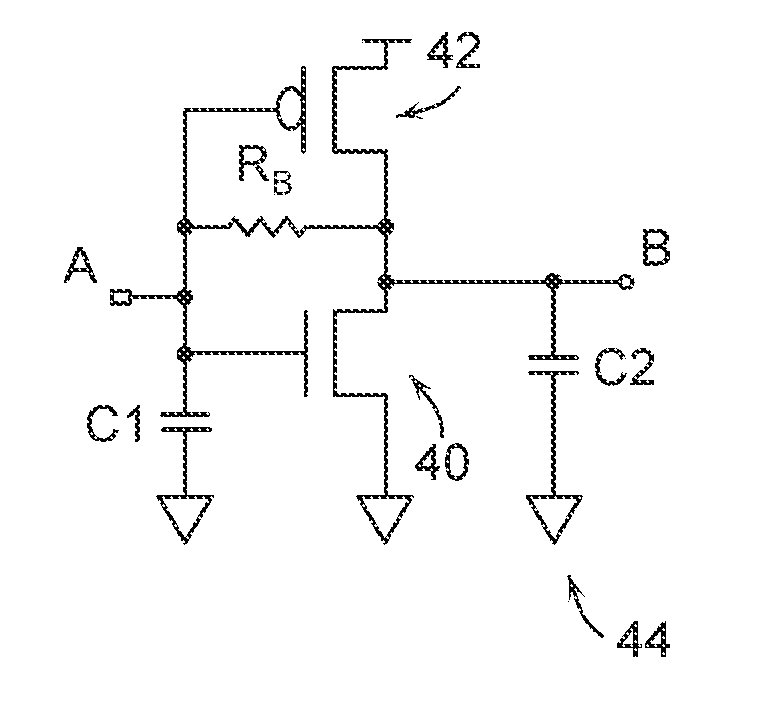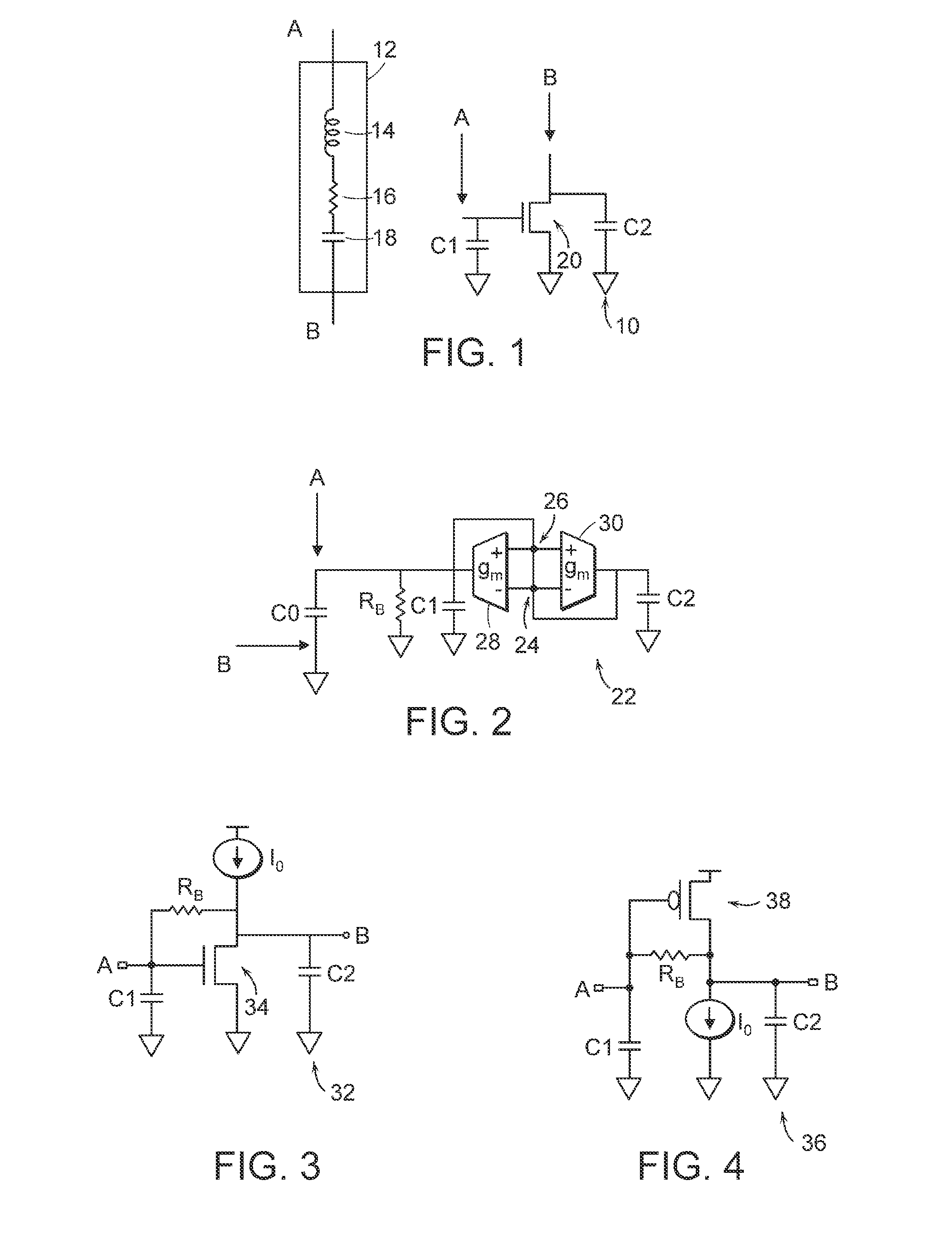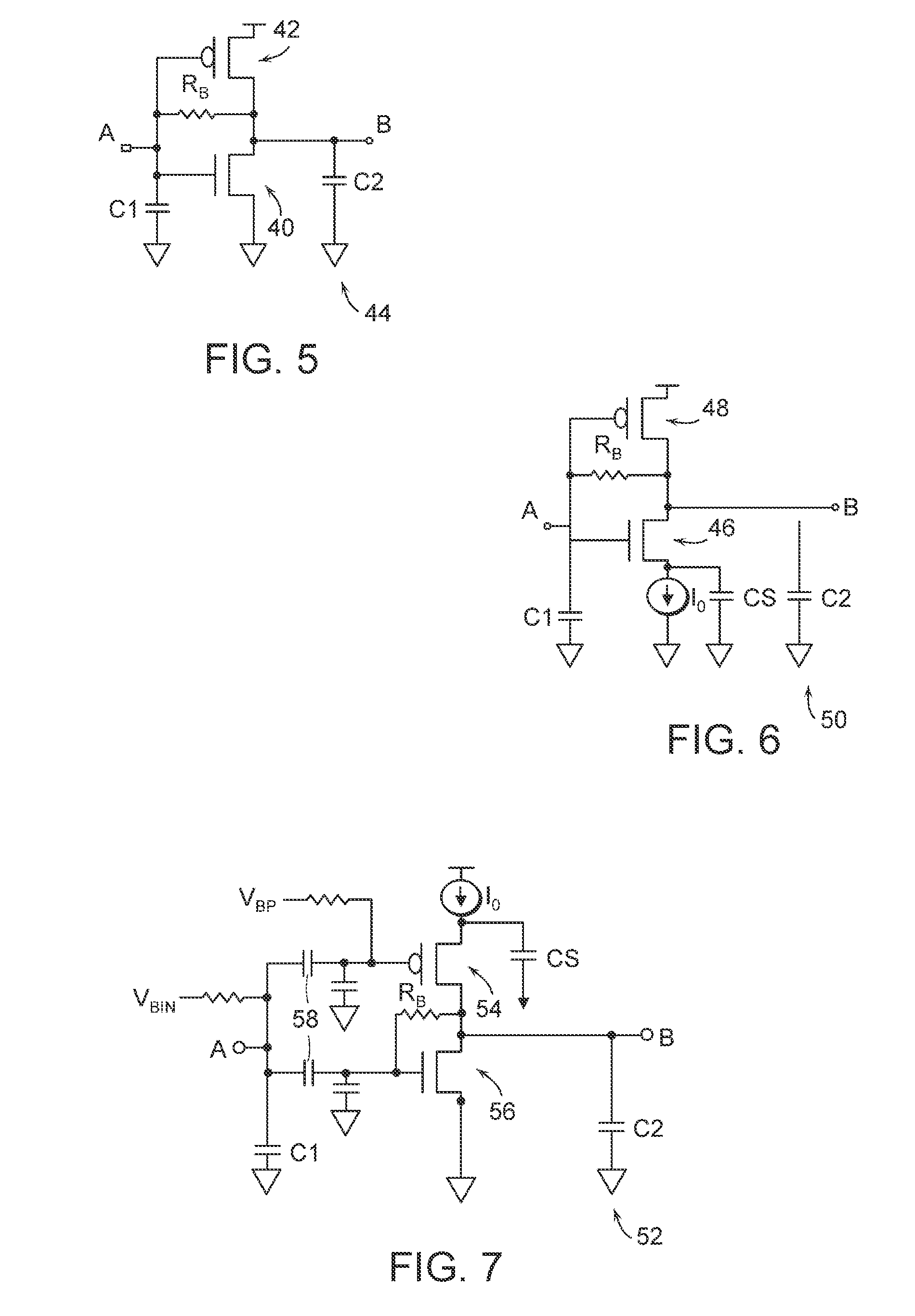High gain, high frequency CMOS oscillator circuit and method
- Summary
- Abstract
- Description
- Claims
- Application Information
AI Technical Summary
Benefits of technology
Problems solved by technology
Method used
Image
Examples
Embodiment Construction
[0032] Turning now to the drawings, FIG. 1 illustrates one form of active circuitry 10 used to initiate and amplify output of a resonator, such as a piezoelectric resonator including, but not limited to, a crystal or SAW. A resonator 12 can be coupled across two pins labeled A and B. Resonator 12 is shown as a model of a piezoelectric resonator or SAW. Resonator 12 can be realized as an inductor 14, resistor 16, and capacitor 18.
[0033] Active circuit 10 is used to generate an active impedance ZA. The active impedance ZA has both an imaginary (ZI) and real resistance (ZR); however, the real resistance is a negative value. For reliable start-up conditions, the value of this negative real resistance should be approximately three times larger than resonator 12 motional resistance.
[0034] Within active circuit 10 are two capacitors C1 and C2. The resonance frequency produced by circuit 10 can be trimmed by implementing capacitors C1 and C2 as capacitor banks switched by pass gates, for ...
PUM
 Login to View More
Login to View More Abstract
Description
Claims
Application Information
 Login to View More
Login to View More - R&D
- Intellectual Property
- Life Sciences
- Materials
- Tech Scout
- Unparalleled Data Quality
- Higher Quality Content
- 60% Fewer Hallucinations
Browse by: Latest US Patents, China's latest patents, Technical Efficacy Thesaurus, Application Domain, Technology Topic, Popular Technical Reports.
© 2025 PatSnap. All rights reserved.Legal|Privacy policy|Modern Slavery Act Transparency Statement|Sitemap|About US| Contact US: help@patsnap.com



